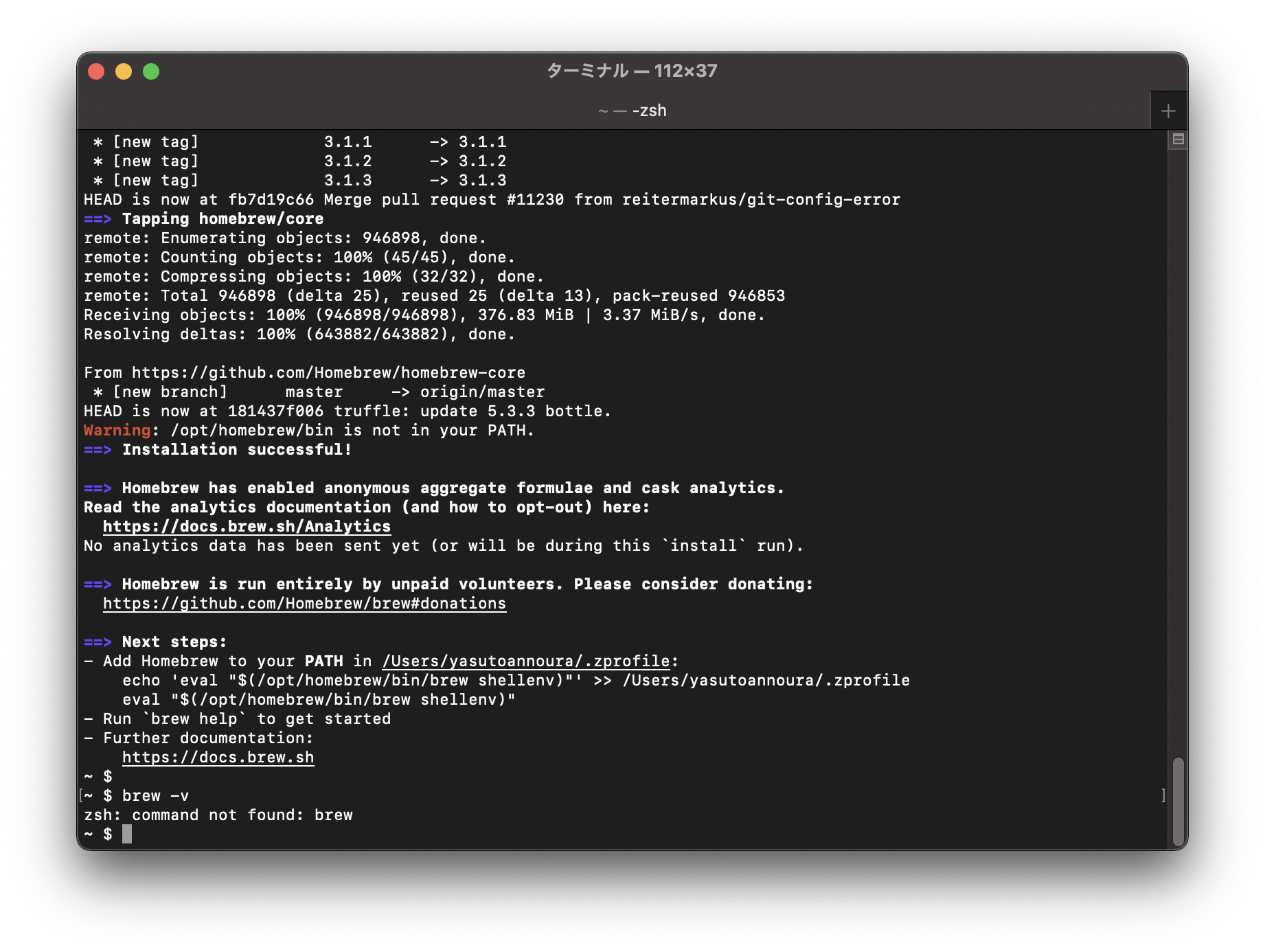- How To Install Homebrew On Macos Catalina
- Brew Command Not Found Mac Os Catalina Download
- How To Install Homebrew On Mac Catalina
- How To Install Brew On Macos Catalina
This site contains user submitted content, comments and opinions and is for informational purposes only. Apple may provide or recommend responses as a possible solution based on the information provided; every potential issue may involve several factors not detailed in the conversations captured in an electronic forum and Apple can therefore provide no guarantee as to the. Command not found: telnet Could not create a new process and open a pseudo-tty. Even if you follow some other guides online which suggest using homebrew or copying the files to /usr/local/bin, you’ll find this doesn’t resolve the problem of accessing telnet:// style links which EVE-NG rely’s upon. For the macOS platform, you can install the Azure CLI with homebrew package manager. Homebrew makes it easy to keep your installation of the CLI update to date. The CLI package has been tested on macOS versions 10.9 and later. The current version of the Azure CLI is 2.25.0. For information about the latest release, see the release notes.
Greetings friends! After I upgraded my old MacBook Pro to High Sierra 10.13, Terminal surprised me with something like this: “telnet command not found on Mac”. What? It turns out! He was deleted! Well, here the question arose of how to return telnet on Mac?
Install Telnet on Mac via Homebrew
You must first install the missing Homebrew package manager. What does Homebrew do? Homebrew installs the packages you need that are not provided by Apple. Use this step-by-step guide for the fastest solution:
- Install Homebrew via Terminal:
- Install telnet using the Homebrew package manager:
- We are waiting for the installation to complete;
- Now telnet is installed on macOS High Sierra. We check the performance:
Read more:How to Use the Port Scanner in macOS Network Utility?
Conclusion
Of course, now few people use the telnet protocol, because there is SSH more powerful and secured tool, but still telnet sometimes could be necessary. Apple is so reckled about our security from that to exclude telnet from the list of basic Terminal commands on Mac.
The easiest way to install a number of Unix style applications and open source software onto macOS Big Sur, Catalina, Mojave and earlier Sierra OS versions is via a package manager, unfortunately, macOS Big Sur doesn’t come with one, but fortunately, some good folks care, they come in the form of Homebrew.
The install of Homebrew also works on macOS Catalina, macOS Mojave, (High)Sierra, El Capitan, and Yosemite, so macOS 10.10 – 10.14
Homebrew isn’t the only option, also available is MacPorts and Fink but Homebrew is the newest and most popular of the trio.
Install Homebrew
To download install Homebrew run the install script on the command line as below and let the script do its thing:
If you don’t have Apples Xcode Command Line Tools installed it will alert you to that it will install it and carry on with the Homebrew installation and download the Command Line Tools you will need to enter your admin password at some point.
Then Homebrew is installed.
After this Homebrew is installed and ready to install other apps.
To get started run brew help can give some command example usage.
To check for any issues with the Homebrew install run:

One issue that typically comes up is an outdated or missing version of Xcode.
For the latest macOS, brew doctor will warn that the Homebrew install won’t be 100% if Xcode is not up to date, so update Xcode from the App Store.
To search for an application:
To install
To list all apps installed by Homebrew
To remove an installed application
To update Homebrew itself
To see what packages are out of date but not to upgrade them
To see what upgrade packages all or singular
To hold a package at a certain version

To release a package from a certain version
To see what else you can do
Where does Homebrew install stuff …. in the Cellar
Where the brew lives.
How To Install Homebrew On Macos Catalina
You can see your Homebrew configuration by running
The output should be similar to …
Brew Command Not Found Mac Os Catalina Download
All installations via Homebrew are filed independently in the filing system in /usr/local/Cellar and linked into /usr/local/bin which is a directory which allows you to run these commands and apps as if part of the regular operating system.
How To Install Homebrew On Mac Catalina
This directory is also out of the SIP bounds so there should be no authentication macOS error dialog boxes.
Remove Home-brew and all packages

To remove the Home-brew installation and all packages it has installed..
How To Install Brew On Macos Catalina
HomeBrew is a great package manager just start installing some apps and explore.!